Planting seeds before the last frost will buy you time, and lessen the workload of directed seeding while also transplanting other crops into your garden once the weather warms up. It will allow the vegetables planted before the last frost to germinate earlier and that also means earlier harvest. There are some vegetables that do not need to wait for the weather to warm up significantly but can be planted before the last frost date.
Vegetables to sow outdoors before the last frost include
- Carrots
- Parsnip
- Arugula
- Salad mix
- Head salad
- Swiss chard
- Potatoes
- Spinach
- Mustard
- Beets
- Broccoli
- Cabbage
- Cauliflower
- Kale
- Peas
- Onions
- Celery
- Lettuce
- Asian greens
- Radish
- Kohlrabi
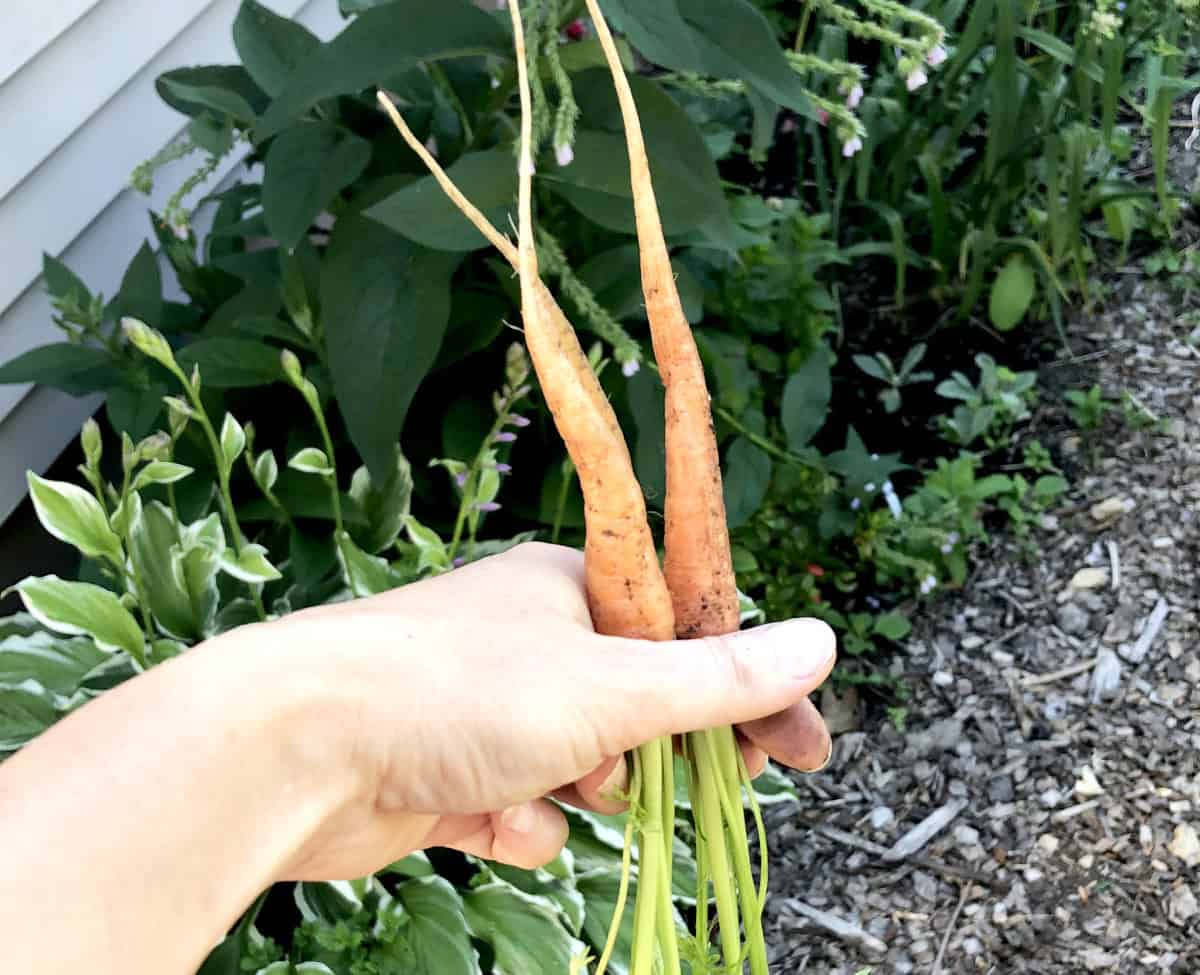
I have just sowed carrots, parsnips, arugula, mustards, spinach, and Swiss chard yesterday, it was only March 29, here in zone 6. And this morning we had ground covered with snow that fell overnight. But it is OK for the freshly sowed seed in the garden. As the snow melts it will water the top of the soil to keep the seeds moist. After I sowed my seeds, I covered them with a fleece cover for protection from frost, but most importantly to protect them from pests like birds, squirrels, chipmunks, and rodents. These pests like to dig out the seeds and eat them. A row fabric or fleece row cover will not only keep your seeds moist and warm but also protect them from being eaten.
When the seeds are eaten it is hard to spot how many seeds were eaten up. You might find out too late that nothing has sprouted because all was eaten up. It is always a good idea to cover your freshly planted seeds with something to protect them from being eaten, and thus all your work and precious time is wasted.
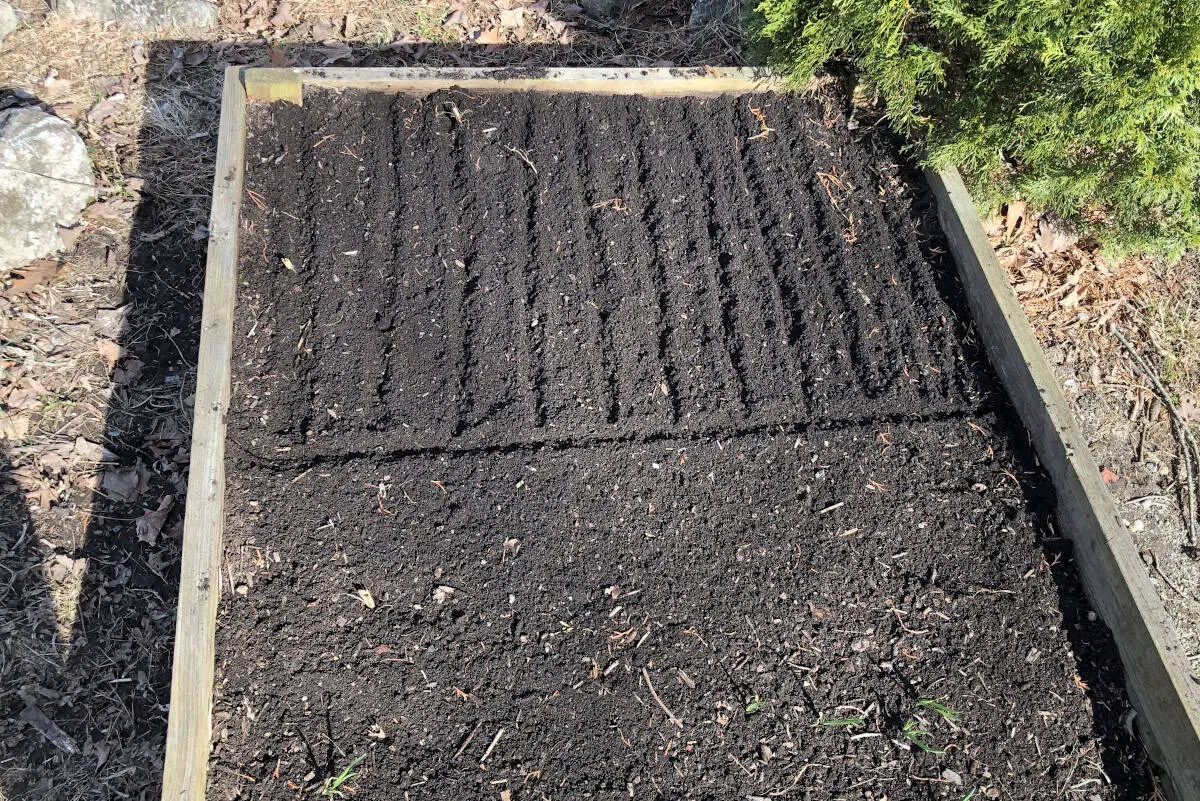
I have attached the photos taken yesterday as I sowed the seeds directly in the garden. Today as I wrote this post, I went out and took a picture of the garden beds covered with fleece. You can still see the remaining snow in shady spots. It will all be gone by the evening.
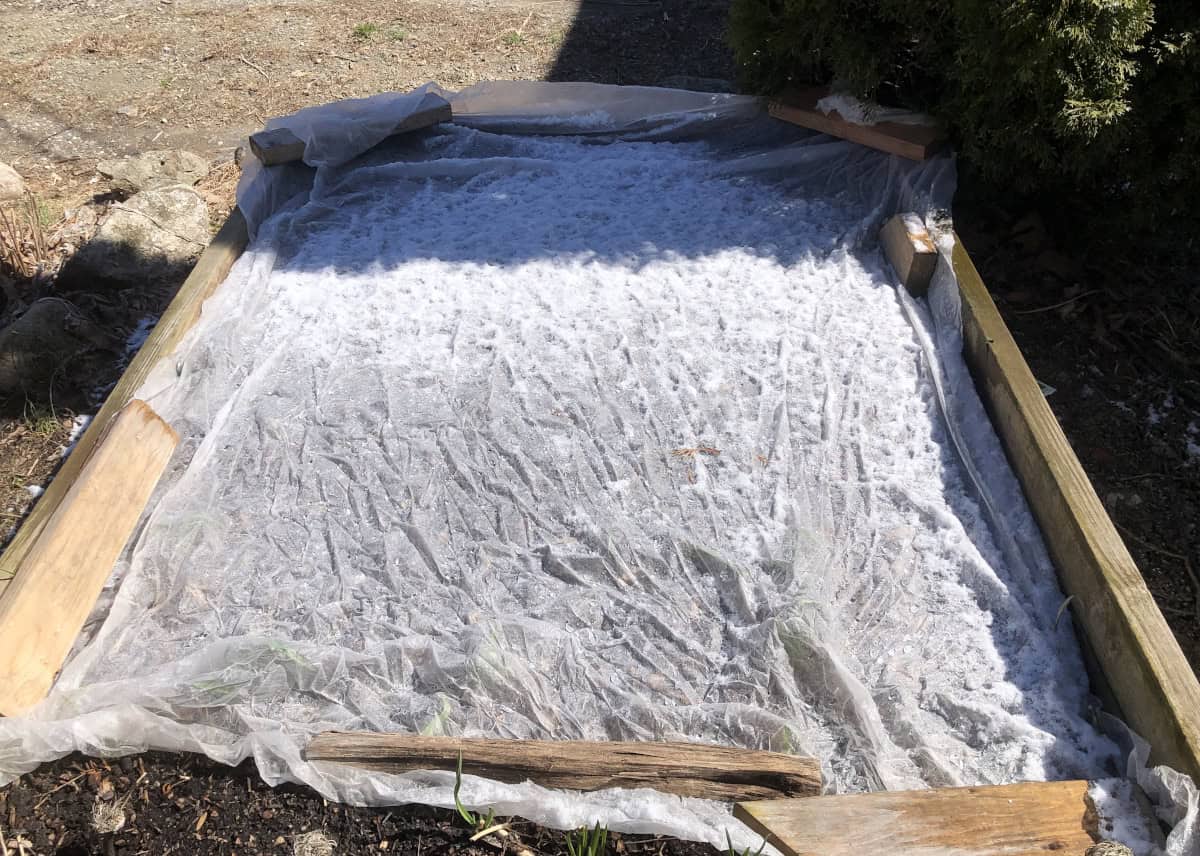
What seedlings to plant outdoors in April in zone 6
What seeds can I plant outdoors before the last frost?
Seeds of all cool-weather crops can be sowed directly in the garden even before the last frost. Root crops, like carrots, parsnips, radishes, turnips, potatoes, beets, and onions, can all be planted directly in the garden even 4 weeks before the last frost is gone. Leafy greens like head salad, lettuce mix, kale, Swiss chard, arugula, spinach, mustard, Asian greens, and celery can be direct seeded as well. Cabbage family crops include cabbage, cauliflower, broccoli, and kohlrabi too. Peas are also one of the cool-weather favorites that can be sowed before the last frost.
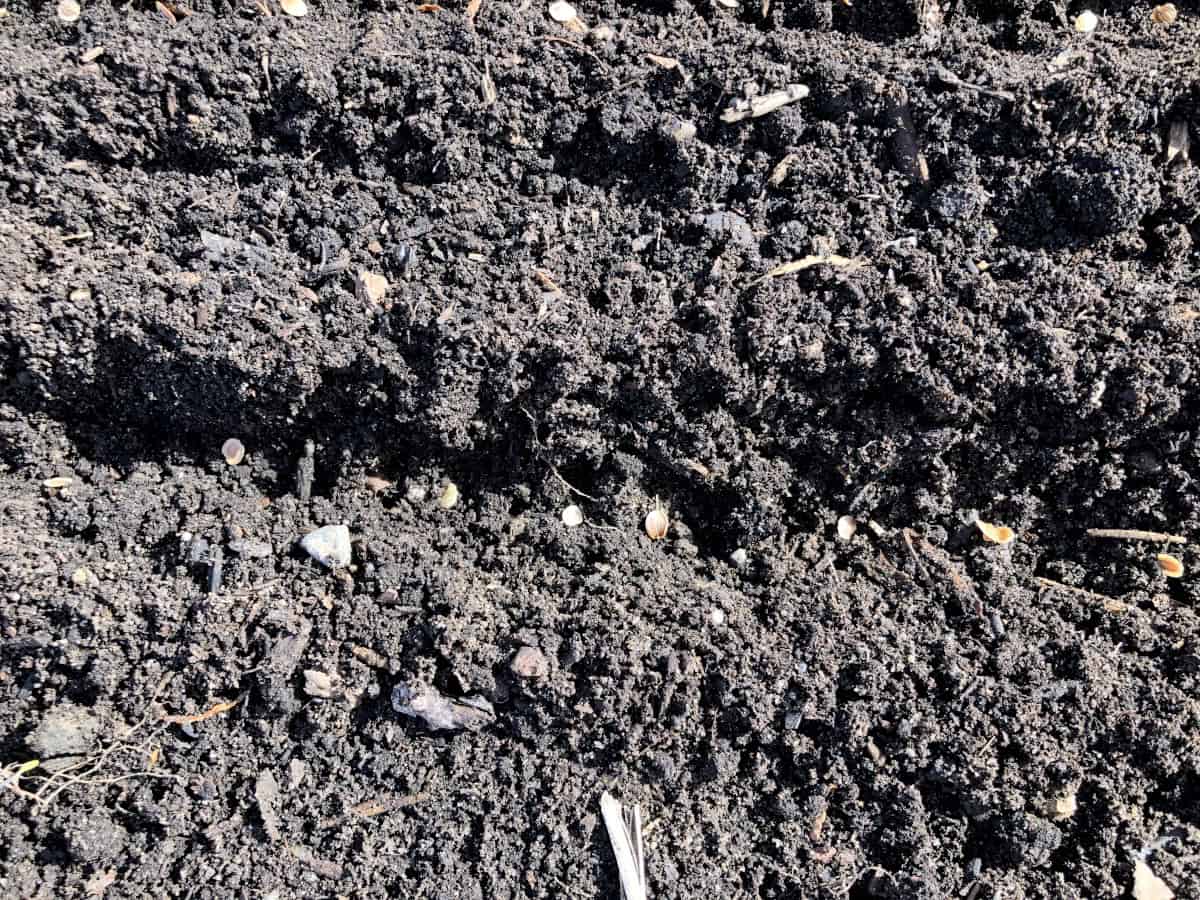
In order to know the last frost date for your specific location you need to know your hardiness zone. A hardiness zone is a geographic area defined by ten degrees of temperature difference. Each hardiness zone is then split into A and B segments with 5 degrees of temperature difference. Read here What hardiness zones mean and how to determine yours.
Can you plant lettuce before the last frost?
Yes, lettuce, either head lettuce, leafy, or mixed lettuce can be all planted and sowed in the garden before the last frost.
I sowed lettuce just yesterday as the photos show. I also sowed other leafy greens like spinach, mustard, and arugula. Lettuce is a cool-weather crop. Lettuce thrives in cooler temperatures. Some lettuce varieties do well even after being hit with frost, they just bounce back. Lettuce does not however do well after being hit with a hard frost. But most varieties recover well after an overnight light frost in early spring.
As the temperatures go up, some lettuce varieties even turn bitter in flavor, therefore planting lettuce even 4 weeks before the last frost date, is actually better, because the plant will have enough time to grow, mature, and be harvested at its best flavor before the hot weather hits and turns bitter. Not all lettuce is bitter when grown in hot weather. Warm weather also causes lettuce to bolt, meaning to flower and produce seeds rather than producing leaves to harvest.
What to plant 6 weeks before the last frost?
Plants that can be sowed directly in the garden outdoors 6 weeks before the last frost are root crops like carrots, radishes, parsnips, and turnips. Also, onions, peas, spinach, and arugula. These are usually the first seeds to hit the garden dirt first before the last frost date.
Can you plant onions before the last frost?
You can plant onions directly in the garden before the last frost. In fact, seedlings of onions can be planted outdoors before the last frost date and the seeds of the onions can be direct seeded as well.
I started onions from seeds and wrote an article to guide you through the process. Read here How to start onions from seed.
Onion is a long-season vegetable, which means they need long hours of sun and a lot of them to form bulbs. They are also cool-weather vegetables which is why they can be planted in the garden directly even before the last frost date.
Plant the onion seedlings about 4 weeks before the last frost date. Sow the seeds about 6 weeks before the last frost date.
In order for any seedlings to be planted outdoors, it first needs to be acclimatized to the outdoor conditions. Click here to get the right knowledge on How to harden off the seedlings before they are planted outdoors.
A GOOD READ:
Can you plant herbs before the last frost?
Yes, herbs like dill, parsley, cilantro, chervil, and chives can be planted outdoors before the last frost. These herbs will thrive in cooler weather which will encourage the leaves to grow rather than flowering and then quickly going to seed as the warm weather does to these herbs.
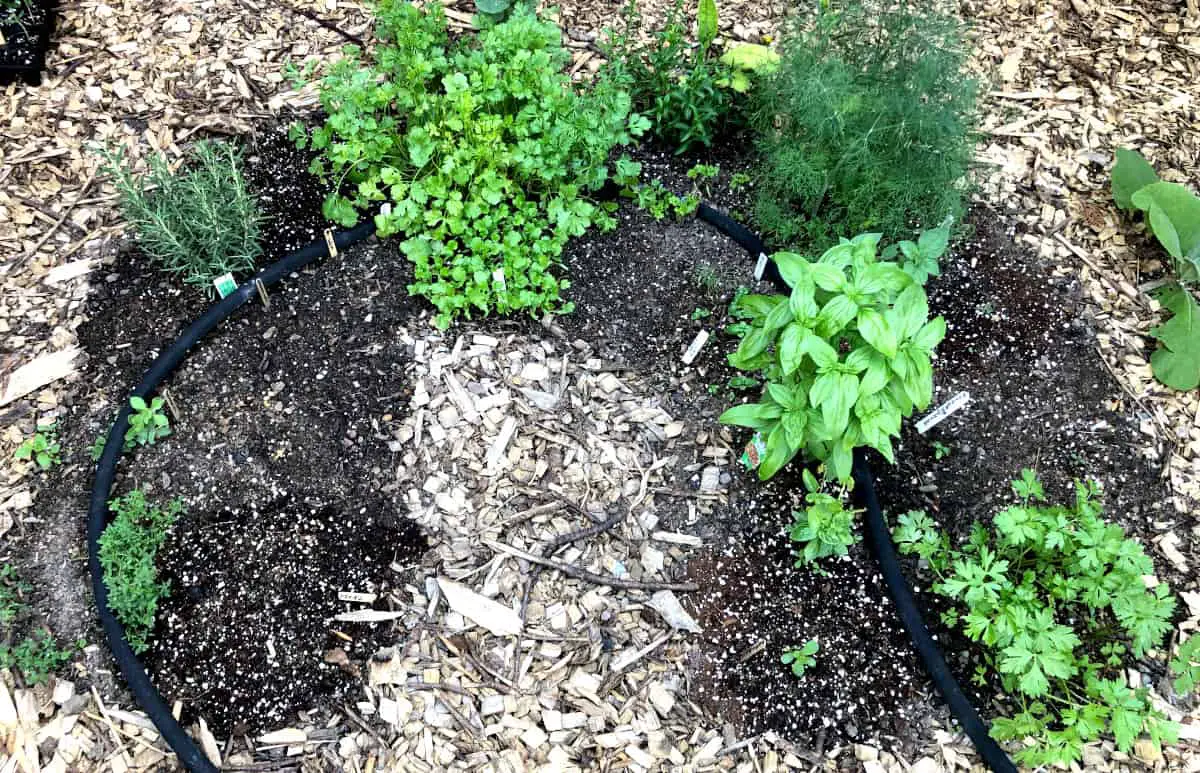
What herbs do not come back next year?
What herbs come back every year?
Can you plant potatoes before the last frost?
Yes, potatoes can be planted even before the last frost. They can be planted about 4 weeks before the last frost. As they are planted underground, they will have time to sprout and reach the surface around the last frost date. Potato leaves can freeze when the frost hits them but they usually do bounce back as light frost does not destroy the roots.
I planted my potatoes in May, shortly after St. Patrick’s Day. I watch out for them and am ready to cover them if I see the leaves out to protect them from occasional night frost. Even though the leaves bounce back after the frost, I like to cover them because I do not want the growth of my potatoes to be slowed down. I rather protect them and help them to put all their energy into growing new tubers rather than putting all their energy into recovering from frost damage. If your potatoes have leaf growth and the danger of frost is still not over, I would advise covering them for protection.
Can fruit trees be planted before the last frost?
Fruit trees, fruit bushes, and canes can also be planted before the last frost is over. Late winter and early spring, is a great time to plant fruit trees, fruit bushes, and fruit canes.
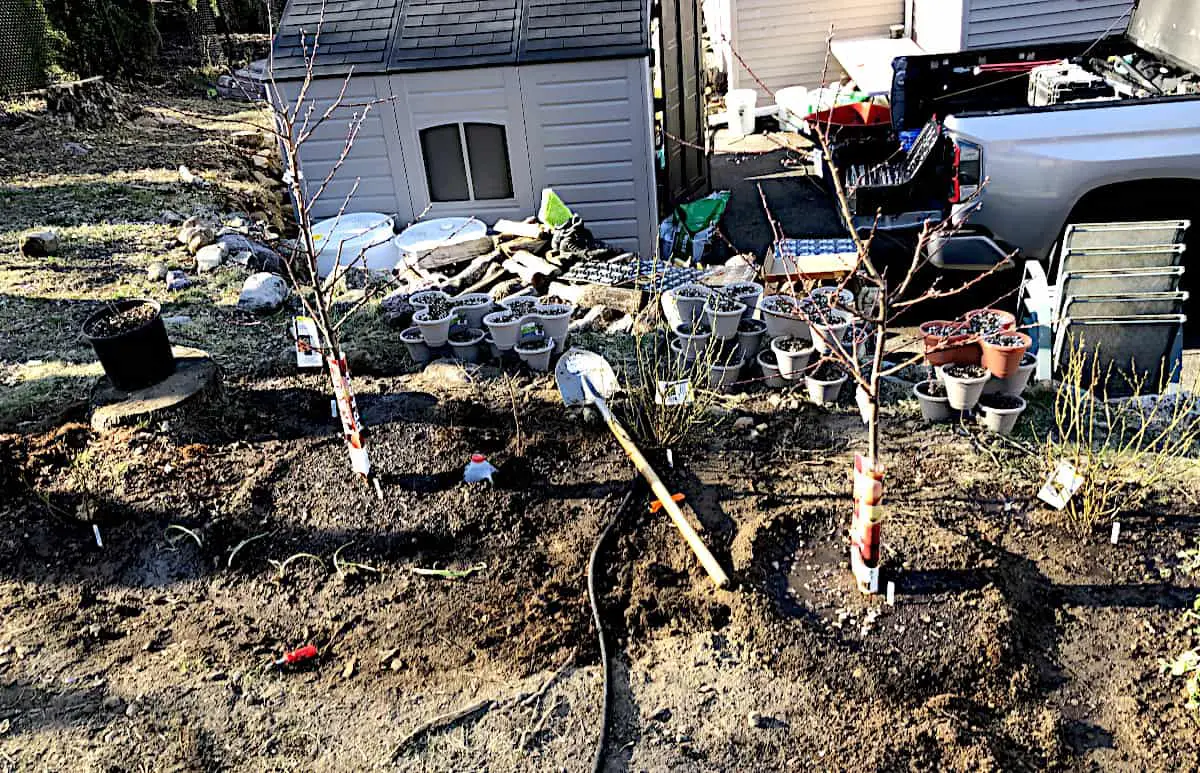
Just about two weeks ago I planted my bare-root raspberry canes, it was the beginning of March. I am still waiting for the warmer weather while also hardening my potted baby blackberry bushes. Once the weather is warmer and we do not get overnight frost every single night, I will plant them outdoors. By then, they will be adjusted to the outdoor conditions well.
How to select the right tree for your location
Planting the trees, bushes, and canes in late winter and the beginning of Spring is beneficial for the trees because they are still in dormancy. Once they come out of dormancy it is best, they are already planted in their permanent place as the roots and the whole tree wakes up and starts to sprout leaves and flowers.
A GOOD READ
What vegetables are best direct sow?

